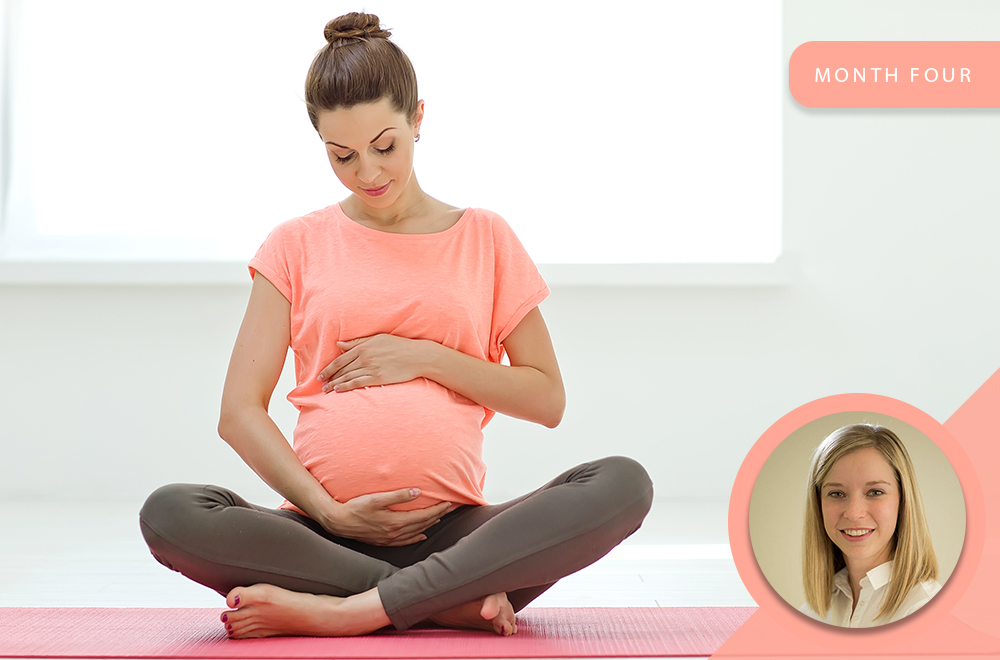
13 Jul Pregnancy: Month 4: A Physiotherapist’s Professional Opinion
By month four your hormones have, for the most part, settled into their new levels. You may start experiencing a feeling of butterflies or bubbles in your abdomen. This is known as quickening. These are the first fetal movements.
How exciting!
There is a real and noticeable weight gain as your uterus keeps on growing, more so upwards in your abdomen. This may lead to heartburn as your uterus can push against your oesophagus.
Some women find that their gums swell and start to bleed due to the increased levels of progesterone. Progesterone may promote the increase in mouth bacteria production. This production may lead to bad breath. A visit to your dentist is recommended, as well as drinking more water than you did before falling pregnant.
As fluid retention continues you may feel some lower leg cramps. This can be combatted by elevation of your legs when you sit or have a lie-down.
Your milk ducts are now fully developed, and you may start experiencing some colostrum leakage. Wear absorbent padding inside of your bra if this happens.
Your belly continues to grow, and this keeps on changing your centre of gravity. As your belly stretches so do the abdominal muscles underneath the skin. This stretch pulls your pelvis forward, increasing the lower back arch even more. This change in the centre of gravity can throw you off balance. Your back and hip muscles work even harder to maintain your balance and new posture. This can lead to lower back pain and discomfort towards the end of the day as the muscles tire.
From the start of the second trimester, you should start sleeping on your sides, preferably on your left side. This ensures proper blood circulation to your body as well as to the fetus. Use lots of pillows or a full-body pillow to get comfortable when you are unable to do so without any support.
Exercising on your back should be avoided from now on as this will affect the circulation to your body and the fetus. Avoid standing still during exercise as it can lower your blood pressure even more and make you dizzy. Examples of exercises to avoid would be lifting heavy weights and holding yoga poses. Incorporate a cool down period into your exercise regime, allowing your heart rate and blood pressure to return to normal more gradually.
EXERCISE OF THE MONTH: WALL SLIDES
- Stand against a wall or door with your back and buttocks flat against the door, feet gently turned out, shoulder-width apart and well forward away from the door.
- With the lower tummy gently pulled in, slowly tense both thigh muscles at the same time.
- Maintain this firm hold of the muscle and slowly slide down the door to about a 40° bend at the knees.
- With the knees bent, hold the position for 5-10 seconds and slowly push yourself up against the wall (with your back and buttocks against the wall) back to the starting position, all the time keeping your thighs tense, then relax the thighs.



No Comments